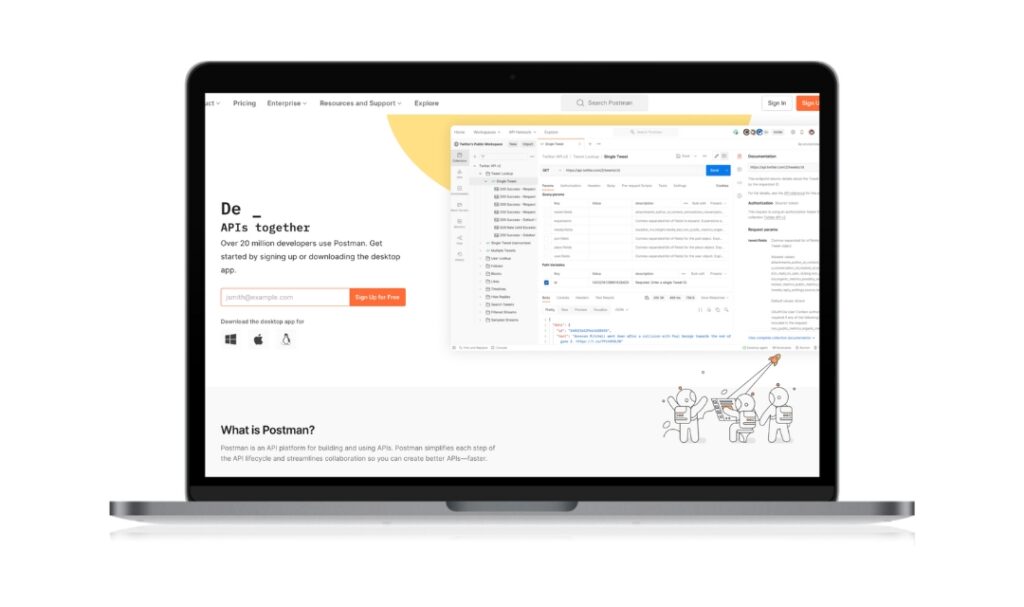
Postman is a platform where we can develop and use APIs. The platform works to simplify each step of the API lifecycle and streamline collaboration so you can build APIs faster.
Postman started in 2012 as a side project of software engineer Abhinav Asthana, who wanted to simplify API testing while working at Yahoo Bangalore. He launched Postman as a free app in the Chrome Web Store. As the app’s usage grew, Abhinav recruited former colleagues Ankit Sobti and Abhijit Kane to help create Postman Inc. The three co-founders lead the company today, with Abhinav serving as CEO and Sobti as CTO. In 2022, Postman was ranked #28 on the Forbes Cloud 100 list, up from #54 the previous year.
While the coding and everything else seemed to run well, creating a great product is one thing, and building a company to sell the said product is another thing entirely. Each entrepreneur will have his or her share of challenges.
Abhijeet Kane, Product Architect, and co-founder says, “Once you hit revenue, there is no way you can survive as a product without the leadership team being good.” He adds, “One of the first challenges was that we were dealing with a huge user base. The second thing is just the overwhelming amount of information that you have to juggle in your head, at all times.”
The startup was in the beginning more of a side project for Abhinav in 2012. Later it raised $150 million on June 12, 2020, which was the firm’s highest fundraising round after almost a year at a valuation of $2 billion. This round last year was already a pace-setter for Postman, thereby opening many more doors for raising funds. According to the company, today 98% of Fortune 500 companies use the platform provided by Postman.
Postman significantly reduces the time it takes for teams to find APIs before they develop new ones, reducing redundancy across operations, but also finding them when APIs are needed as part of new web, mobile, and device applications, as well as a system to system integration.
The Postman business model is in alignment with enterprise objectives. The Postman Pro and Enterprise offerings are all about scaled usage of the platform, which includes the number of collections, users, teams, workspaces, and the collaboration, automation, and orchestration across them.
All the core Postman features are free, and will remain free—developers love Postman because of its utility, and we do not intend to mess with that. Paying for Postman means you are getting more organized about how you manage users, collections, environments, teams, and workspaces, as well as using more monitors, runners, mocks, and documentation. While more usage doesn’t always mean an organization is doing things more logically, Postman enterprise features center around the organized governance of users, teams, workspaces, collections, and environments, steering enterprise customers toward optimizing how things get done.
Read inspiring stories and profiles of people and businesses making a difference.

The community is helping entrepreneurs to grow their skills, knowledge, and 360° growth.
Udaan Skill Academy is India’s best skill development and learning platform. We are on a mission to empower youth and entrepreneurs.
Udaan is building a community of entrepreneurs, professionals, and students, using real-time industry data to upskill individuals.
© Copyright 2023 Udaan Skill Academy
Our Digital Partner Branndsjet ❤️